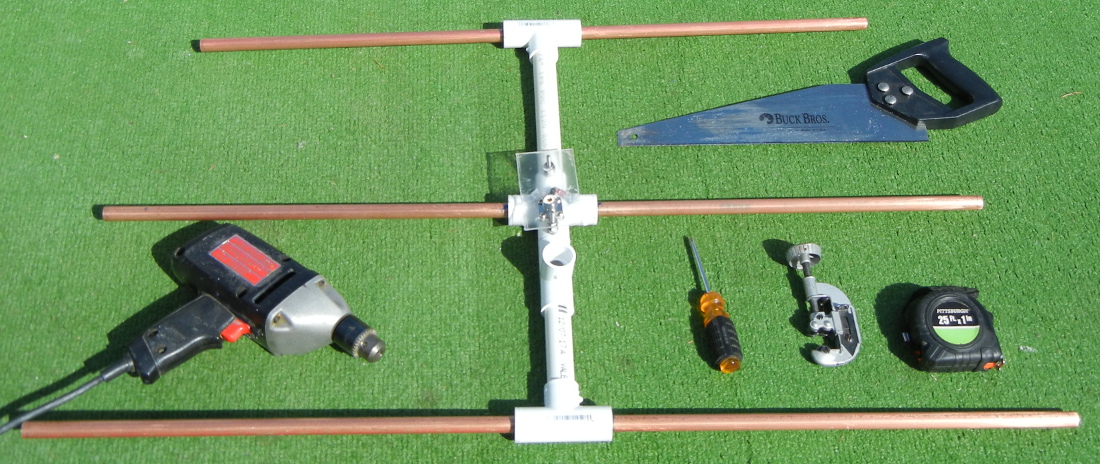
Build this high-performance DIY Dual Band VHF/UHF Yagi antenna using the simple hand tools pictured above. Low-cost PVC pipe fixtures and 1/2″ copper pipe materials are available from your local home improvement store. This was a very gratifying Ham Radio project. Actual performance exceeded simulated expectations.
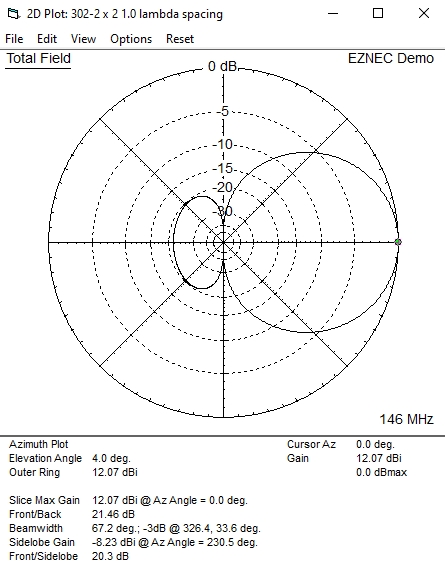
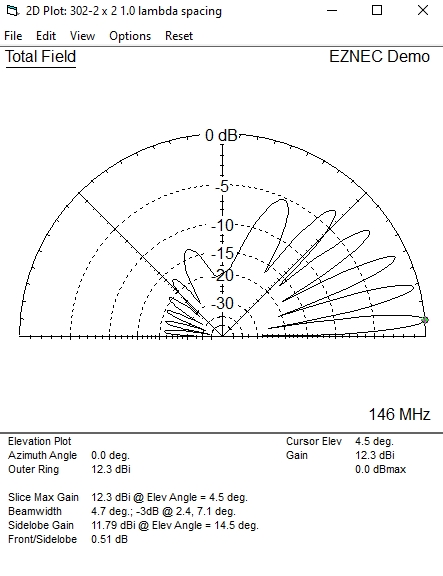
EZNEC simulation shows a forward gain of 12 dBi and beamwidth of 67 degrees. Not bad for a 3-element Yagi. Its light weight enables handheld manipulation, and I was easily able to receive satellite communications with a common handy-talky (HT) radio set.
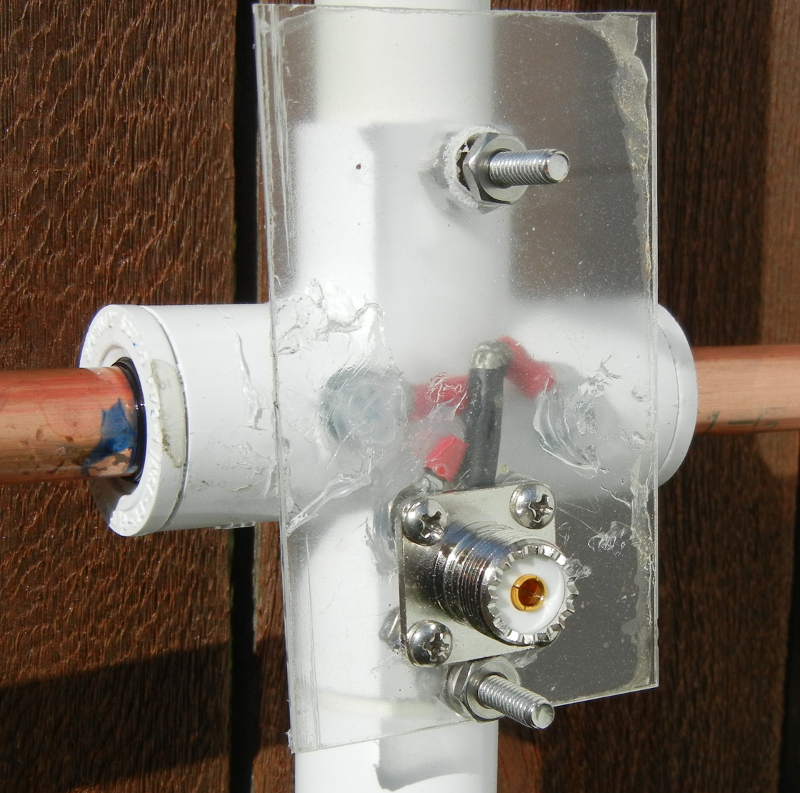
A construction detail shows a SO-239 UHF adaptor mounted on a thin sheet of plexiglass. The center driven element (1/2″ Cu pipe) is connected to the PL-259 adaptor through a short length of coaxial cable with solder lugs and sheet metal screws.
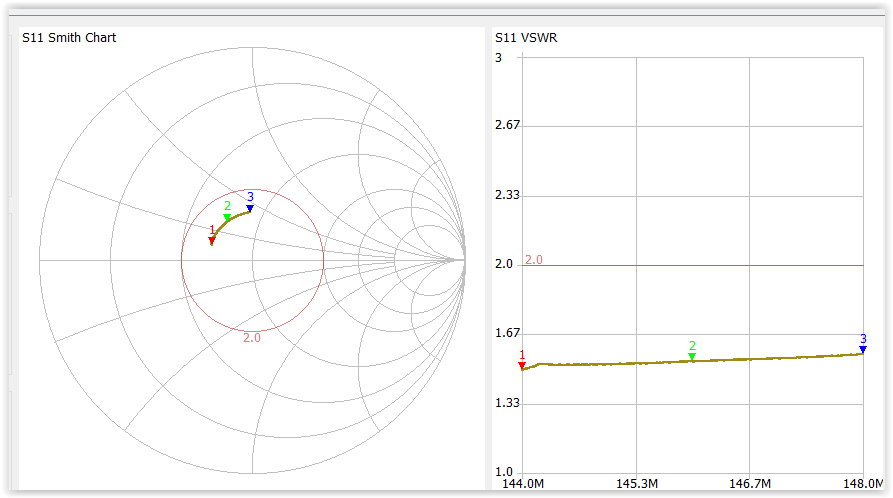
A NanoVNA frequency scan shows VSWR to be about 1.5:1 over the entire 2 Meter VHF Ham Band.
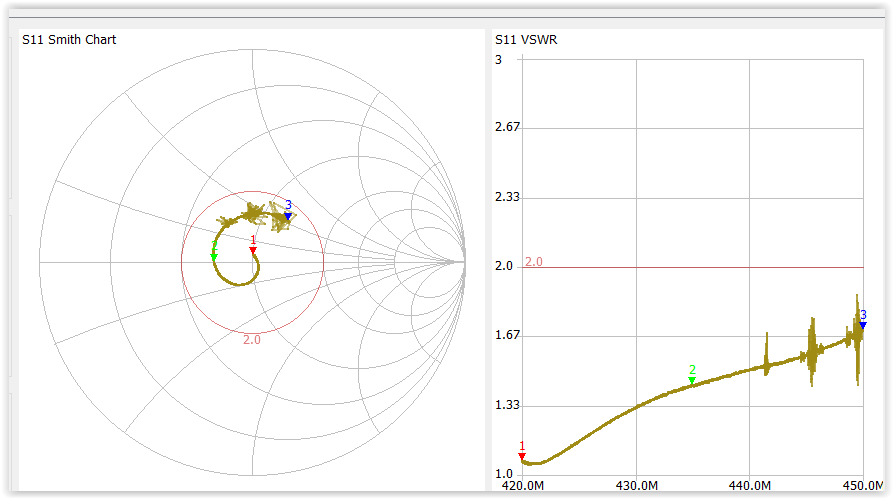
Likewise, VSWR is nearly ideal in the lower half of the 70 cm UHF Ham Band and never exceeds 1.67:1 across the entire band.
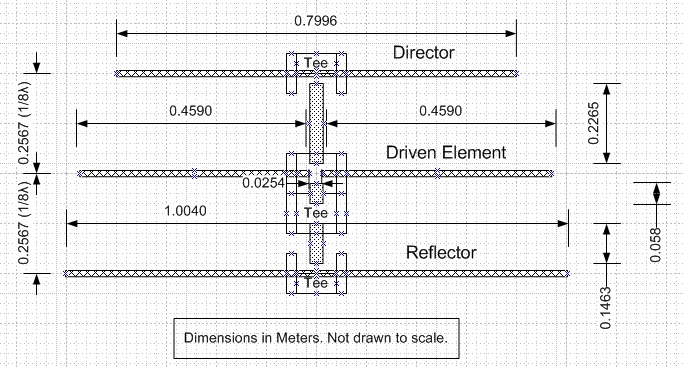
Detailed antenna dimensions, in units of Meters, are shown above. Note the 0.0254 Meter (1.0″) gap in the driven center element.